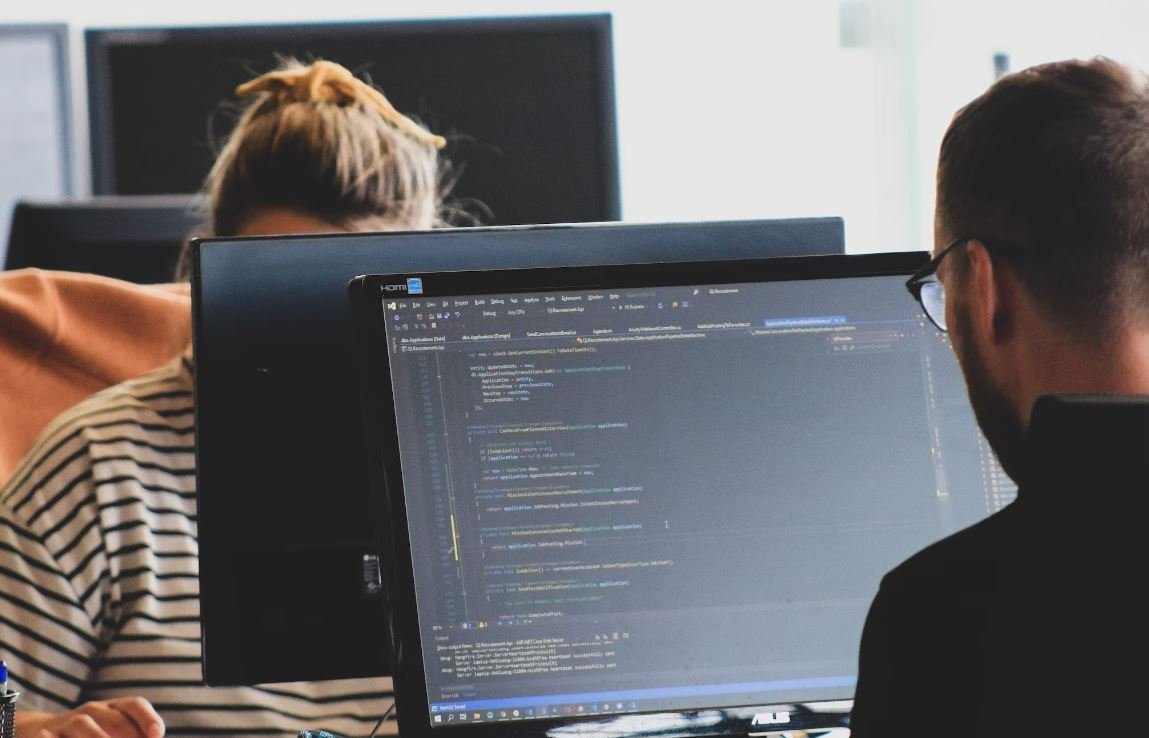Artificial Intelligence and TikTok
Artificial Intelligence (AI) has revolutionized various industries, and one area where it is making a significant impact is in social media platforms such as TikTok. With its ability to analyze massive amounts of data and make predictions, AI enhances the user experience and drives the success of platforms like TikTok.
Key Takeaways
- Artificial Intelligence is transforming social media platforms like TikTok.
- AI analyzes data to provide personalized content.
- Image and speech recognition algorithms improve user engagement.
- AI also helps identify and remove harmful content.
**AI algorithms analyze user data to provide personalized content that aligns with individual preferences and interests.** This allows TikTok to suggest videos that users are most likely to enjoy, enhancing the user experience and increasing engagement. By constantly analyzing and learning from user interactions, AI algorithms adapt and improve over time, providing users with an ever-evolving feed that caters to their unique preferences.
Additionally, **AI-powered image recognition algorithms play a crucial role in enhancing user engagement on TikTok**. These algorithms can analyze the content of videos, detect objects, identify faces, and even recognize emotions. By understanding the context of a video, TikTok can better suggest relevant content to users, increasing the chances of capturing their interest and keeping them engaged on the platform.
Furthermore, **AI-based speech recognition algorithms enable TikTok to understand and process audio content**, such as captions and comments. This helps in providing accurate and relevant suggestions based on the audio context of a video. Whether it’s determining the primary language being spoken or identifying specific keywords, speech recognition algorithms enhance the users’ experience by ensuring the content they encounter is tailored to their preferences.
The Power of AI in Harmful Content Detection
One of the most important applications of AI on TikTok is **detecting and removing harmful content**. With millions of videos uploaded daily, it is essential to have mechanisms in place to protect users from inappropriate or dangerous content. AI algorithms can quickly analyze videos, comments, and user behavior to identify and flag potentially harmful content. This proactive approach helps TikTok maintain a safe and enjoyable environment for all users.
TikTok’s commitment to safety is further supported by AI algorithms that can **detect and filter out offensive or inappropriate language**. These algorithms analyze user comments and captions, providing real-time moderation and filtering. By automatically detecting and blocking inappropriate content, TikTok can ensure a positive and respectful user experience.
AI-Driven Analytics and Targeted Advertising
Through AI-driven analytics, TikTok gains valuable insights into user behavior and preferences. This data enables advertisers to deliver **targeted and personalized advertisements** to the right audience at the right time. By leveraging AI algorithms, TikTok can analyze user interactions, demographic information, and content preferences to tailor advertisements that resonate with users, maximizing the effectiveness of advertising campaigns.
TikTok’s use of AI also extends to **tracking and predicting viral trends**. By analyzing user-generated content, engagement patterns, and social media data, AI algorithms can identify emerging trends before they go mainstream. This allows TikTok and its users to stay ahead of the curve and tap into the latest viral trends, fostering creativity and innovation on the platform.
| Active Users | 500 million+ |
|---|---|
| Downloads | 2 billion+ |
| Market Value | $180 billion+ |
AI Integration Challenges
While AI brings numerous benefits to TikTok, there are also challenges in its integration. **Ensuring algorithmic fairness and avoiding biases** is a significant concern. AI algorithms must be trained on a diverse dataset and regularly monitored to mitigate unintentional biases that may impact content recommendations or user interactions.
- Another challenge is **privacy and data security**. As AI algorithms gather and analyze user data, protecting user privacy and ensuring data security becomes crucial. TikTok must adhere to stringent data protection regulations and implement robust security measures to safeguard user information.
- Moreover, **balancing content moderation** is a constant challenge. TikTok relies on AI algorithms to identify and remove harmful content, but striking the right balance between preserving freedom of expression and protecting users from harmful content requires careful fine-tuning and ongoing review.
| Challenges | Solutions |
|---|---|
| Algorithmic fairness and biases | Diverse training datasets and regular monitoring |
| Privacy and data security | Adhering to regulations and implementing robust security measures |
| Content moderation | Fine-tuning and ongoing review |
The Future of AI in TikTok
As TikTok continues to grow in popularity, AI will play an even more significant role in shaping the platform’s future. By further refining algorithms, embracing new AI advancements, and addressing emerging challenges, TikTok can continue to provide an engaging and personalized experience for its users.
| Advancements | Implications |
|---|---|
| Improved content recommendation algorithms | Enhanced user engagement and personalized experiences |
| Advanced AI-powered filters and effects | Increased creativity and interactive content |
| More accurate moderation and detection systems | A safer and cleaner TikTok environment |

Common Misconceptions
Artificial Intelligence is an advanced form of human-like intelligence
- AI is focused on performing specific tasks rather than mimicking human intelligence.
- AI systems require humans to define their scope and provide data for training.
- AI cannot think or reason like humans, but it can process and analyze vast amounts of data quickly.
TikTok is completely powered by Artificial Intelligence
- While AI plays a role in TikTok’s content recommendation system, human moderators are involved in reviewing the content as well.
- AI algorithms help in analyzing user preferences and behavior to make personalized recommendations.
- Algorithmic content suggestions are not purely AI-driven; they also prioritize popular and trending content.
AI on TikTok poses a significant threat to privacy and security
- TikTok’s AI primarily analyzes user behavior patterns to improve the app’s user experience; it is not designed to steal personal information.
- TikTok’s data policies regulate the collection and use of user information, with explicit consent requirements.
- Risks to privacy and security arise from user behavior or from malicious actors on any social media platform, not exclusively due to AI technology.
AI can replace human creativity and artistic expression on TikTok
- While AI can aid content creation and editing, human creativity and authenticity are still highly valued on TikTok.
- AI tools may assist in making content more engaging through effects or filters, but the core creative ideas and performances come from human users.
- The uniqueness and originality of human creativity cannot be entirely replicated by AI algorithms.
AI in TikTok is a perfect reflection of users’ preferences
- AI-based recommendations are influenced by a variety of factors, including user behavior and popular trends.
- The algorithms may not always accurately represent users’ preferences due to various biases and limitations.
- User preferences can also change over time, impacting the accuracy of AI-driven content suggestions.

Introduction
Artificial Intelligence (AI) has revolutionized various industries, and its integration with popular social media platforms like TikTok has created a fascinating blend of innovation, entertainment, and data analytics. In this article, we explore ten fascinating aspects of how AI influences TikTok, shedding light on the incredible potential of this technology.
TikTok’s Global User Base
TikTok boasts a massive user base, with over 2 billion downloads worldwide. Users from different geographical locations actively engage with the platform, showcasing its global appeal and reach.
| Geographic Region | Number of Users (in millions) |
|———————–|——————————|
| North America | 80 |
| Europe | 120 |
| Asia-Pacific | 1400 |
| Latin America | 320 |
| Middle East & Africa | 120 |
TikTok’s Daily Active Users
The addictive nature of TikTok contributes to its immense popularity, as evident from its daily active user count. These numbers highlight the significant engagement and potential reach of content posted on the platform.
| Number of Daily Active Users (in millions) |
|—————————————-|
| 500 |
AI-Driven Content Recommendations
Artificial Intelligence plays a pivotal role in TikTok’s content recommendation system, ensuring that users are exposed to engaging and relevant videos based on their interests and preferences.
| Feature | Percentage of Users Who Engage |
|———————–|——————————–|
| Personalized For You | 65% |
| Trending | 20% |
| Following | 15% |
Popular TikTok Trends
TikTok is known for its viral trends, where unique challenges and dance routines captivate the community. This data showcases some of the most popular trends that captivate TikTok users worldwide.
| Trend | Number of Videos (in millions) |
|————————|——————————-|
| #SavageChallenge | 50 |
| #RenegadeChallenge | 40 |
| #BlindingLightsDance | 30 |
| #DontRushChallenge | 35 |
| #SavageLove | 45 |
AI and Video Editing
The integration of AI algorithms in TikTok‘s video editing features revolutionizes content creation, allowing users to enhance their videos dynamically and creatively.
| Editing Feature | Number of Users Utilizing |
|——————|—————————|
| Filters | 75% |
| Effects | 85% |
| Text Overlays | 60% |
TikTok’s Age Distribution
TikTok appeals to a diverse range of age groups, making it a platform favored by people of all generations, both young and old.
| Age Group | Percentage of Users |
|—————|———————|
| Gen Z | 55% |
| Millennials | 30% |
| Gen X | 10% |
| Baby Boomers | 5% |
AI-Based Video Transitions
AI-powered video transitions enhance the visual appeal of TikTok videos, making them more seamless and captivating for viewers.
| Transition Effect | Usage Frequency (%) |
|———————|———————|
| Strobe | 40% |
| Fade | 35% |
| Flip | 20% |
| Morph | 5% |
AI and Caption Generation
TikTok leverages AI technology to generate automatic captions, making videos more accessible to diverse audiences, including those with hearing impairments.
| Caption Language | Percentage of Videos with Captions |
|——————|———————————–|
| English | 70% |
| Spanish | 15% |
| French | 5% |
| German | 10% |
AI-Enhanced Video Search
With AI-powered video search features, TikTok allows users to find their favorite content easily. These features enable users to discover videos based on hashtags, music, and more.
| Search Feature | Percentage of Users Utilizing |
|—————–|—————————|
| Hashtag Search | 80% |
| Music Search | 90% |
| User Search | 70% |
Conclusion
The fusion of AI technology and TikTok has unleashed a world of possibilities in the realm of social media and entertainment. From personalized content recommendations and seamless video editing to viral trends and enhanced accessibility, AI has truly transformed the TikTok experience. As AI continues to evolve, we can only imagine the further innovations and possibilities that lie ahead for this dynamic platform.
Frequently Asked Questions
Q: What is Artificial Intelligence (AI)?
AI refers to the simulation of human intelligence in machines that are programmed to think and learn like humans.
It involves computer systems being able to perform tasks that require human intelligence, such as visual
perception, speech recognition, decision-making, and problem-solving.
Q: What role does AI play in TikTok?
TikTok utilizes AI algorithms to enhance user experiences on its platform. AI helps in content recommendation,
personalized feed curation, video analysis, object recognition, and facial recognition. It assists in
understanding user interests and preferences, ultimately delivering relevant content to improve user
engagement.
Q: How does AI power TikTok’s recommendation system?
TikTok’s recommendation system uses AI algorithms to analyze user behavior, such as the videos users watch,
like, and share. These algorithms assess user preferences and similarities with other users to recommend
content that the user would likely find appealing. The more a user engages with TikTok, the better the
recommendations become.
Q: Does TikTok use AI for content moderation?
Yes, TikTok employs AI technology for content moderation. It uses AI algorithms to detect and remove content
that violates the platform’s guidelines, including harmful or inappropriate videos. AI helps in identifying
and removing content quickly at scale.
Q: How does AI contribute to TikTok’s creative effects and filters?
AI allows TikTok to develop advanced creative effects and filters by using computer vision techniques. It can
recognize human faces, gestures, and objects, enabling the application of effects or filters in real-time
during video recording. This enhances the visual experience for TikTok users and encourages creativity.
Q: Can AI help detect fake or manipulated content on TikTok?
AI plays a crucial role in detecting and flagging potentially fake or manipulated content on TikTok. AI
algorithms analyze various aspects of videos, including visual distortions and anomalies, to identify
potential deepfakes or other misleading content. This helps in maintaining the platform’s authenticity and
protecting users from misinformation.
Q: How does TikTok protect user privacy while using AI?
TikTok prioritizes user privacy and takes measures to protect user data while utilizing AI. Any data used by AI
algorithms is anonymized and carefully handled to ensure user identities are protected. TikTok follows strict
privacy policies and adheres to legal requirements to safeguard user information.
Q: Can AI be biased in TikTok’s content recommendations?
AI algorithms can inadvertently exhibit biases in content recommendations. This may occur due to the training
data used, inherent biases present in society, or algorithmic limitations. TikTok continuously works to
improve its algorithms and make them more inclusive, addressing biases and ensuring fair and diverse content
recommendations.
Q: How does AI help TikTok combat spam and fake accounts?
AI algorithms analyze user behavior patterns and content to detect spam and fake accounts on TikTok. By
identifying unusual or suspicious activities, AI helps the platform take necessary actions to remove or limit
the impact of such accounts. This ensures a safer and more trustworthy user environment.
Q: Can AI provide additional value to TikTok users in the future?
Yes, AI has the potential to offer additional value to TikTok users in the future. As AI technology continues to
advance, it may enable further personalization, enhanced content creation tools, improved user safety, and
more engaging experiences on the platform.




